This wonderful Cornish workshop and museum is dedicated to the legacy of studio pottery trailblazer Bernard Leach
Become an instant expert on…five paintings by Vermeer
Become an instant expert on…five paintings by Vermeer
16 May 2023
Johannes Vermeer is one of the greatest artists in history – and one of the most mysterious. The sell-out exhibition in his name at the Rijksmuseum closes soon. If you missed the chance to visit, our expert, Jane E Choy-Thurlow, reveals more of his story, told through luminous artworks from the show
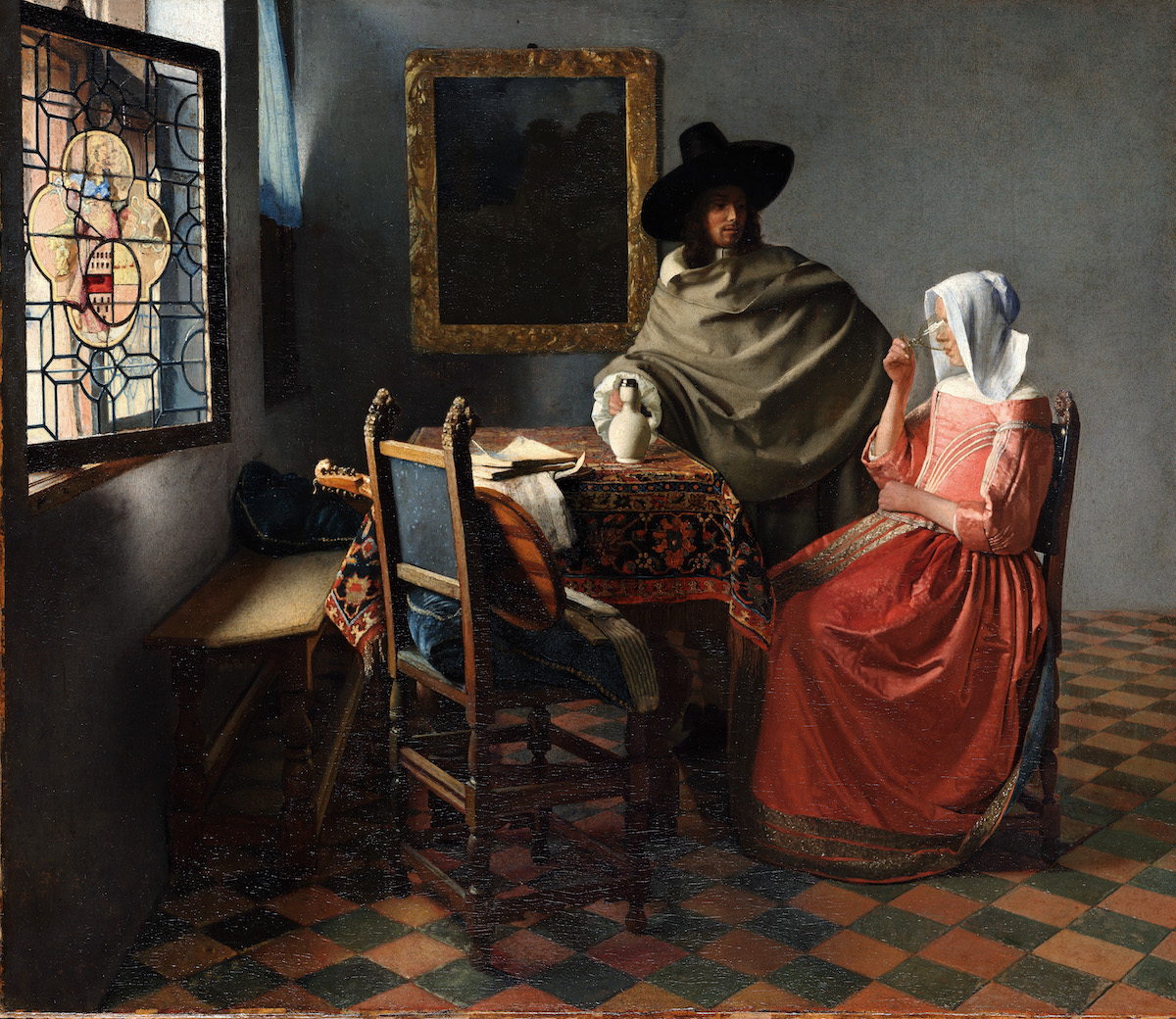 Girl with a Wine Glass, 1659–61. Credit: Staatliche Museen zu Berlin, Gemäldegalerie, Berlin
Girl with a Wine Glass, 1659–61. Credit: Staatliche Museen zu Berlin, Gemäldegalerie, Berlin
‘Vermeer’s most remarkable trait… is the quality of his light’
Théophile Thoré-Bürger, 19th-century art critic
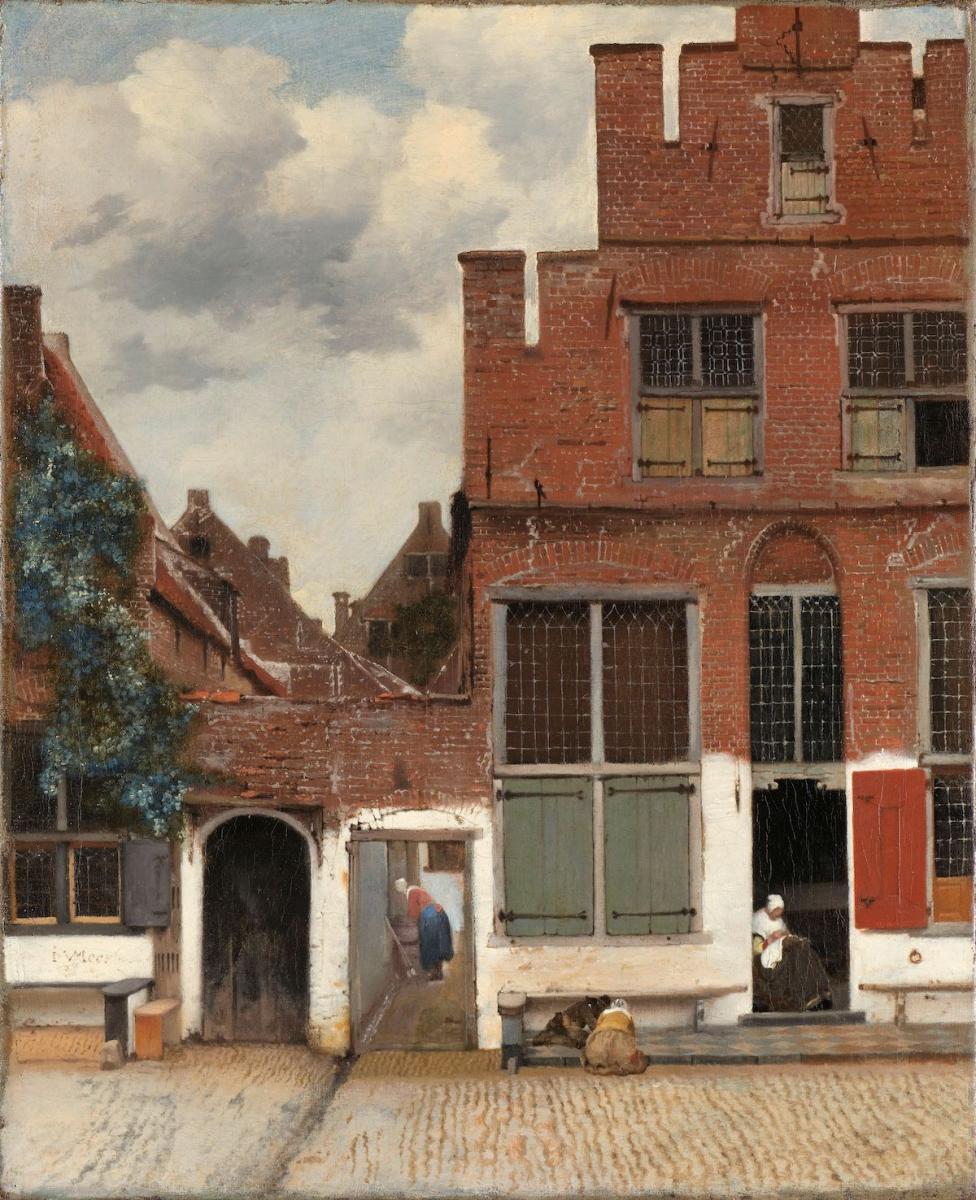 View of Houses in Delft, known as The Little Street, 1658–59. Credit: Rijksmuseum, Amsterdam; Schenking van de heer HWA Deterding, Londen
View of Houses in Delft, known as The Little Street, 1658–59. Credit: Rijksmuseum, Amsterdam; Schenking van de heer HWA Deterding, Londen
THE SPHINX OF DELFT
It’s remarkable to think that Johannes Vermeer’s name was almost forgotten until the French art critic ThéophileThoré-Bürger rediscovered him in the 19th century. He named the artist ‘the Sphinx of Delft’ as so little was known about him.
We have no written sources by the artist, only notations in archives of births, marriages, deaths, debts and court actions. We do not know what he looked like, although he might have left us a possible image in two of his paintings.
We do know that he was born in October 1632, the only son of a moderately prosperous Delft family. His father was a weaver, inn keeper and art dealer. Vermeer inherited his father’s art-dealing business when he died in 1652. A year later he married Catharina Bolnes. Her mother had refused to sign to allow publication of the marriage vows, but said she would not otherwise stand in the way.
We do not know why.
Perhaps because they were Catholic and Johannes Protestant, or they were a higher social class. Vermeer and Catharina had 14 or 15 children and lived for a time with her mother in the Catholic quarter of town near a Jesuit mission. That same year Vermeer joined the Guild of St Luke as a master painter, but we do not know where and with whom he studied. Perhaps he was autodidactic, receiving some guidance from artists attached to his father’s art business.
We think Vermeer painted 45 – possibly 50 – works, although there are currently only 37 authenticated paintings. He died in 1675, aged 43, leaving a widow, 11 children and a mountain of debt. It is thought he spent his entire life in Delft.
So let’s look at five of his works to try to unravel some of the mystery of Vermeer’s story.
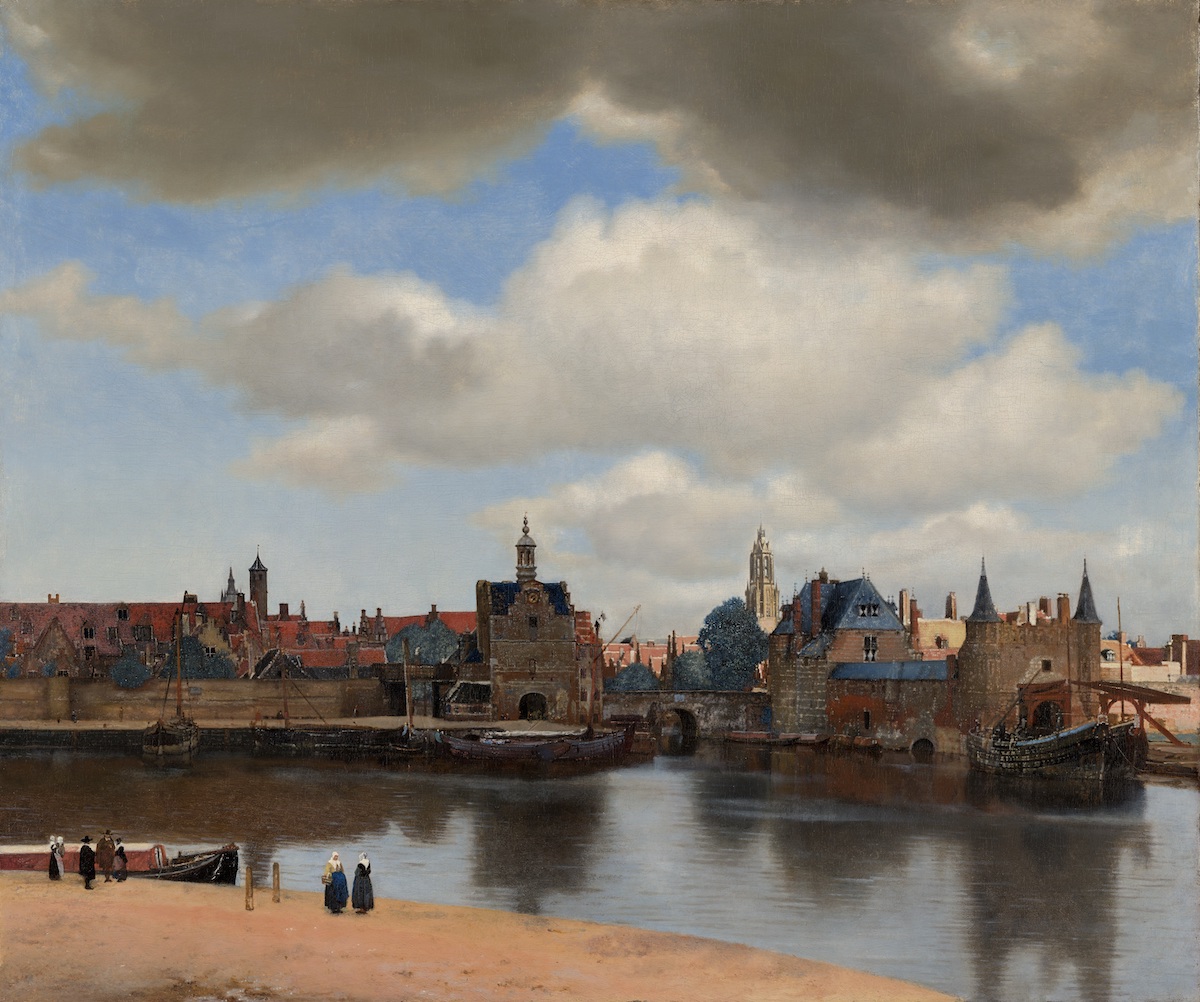
View of Delft, 1660–61. Credit: Mauritshuis, The Hague
CITY CALM
This first is his View of Delft.
On seeing this painting in the Mauritshuis in 1902, the French novelist Marcel Proust claimed: ‘From the moment I saw View of Delft… I knew I had seen the most beautiful painting in the world.’
A master of light, colour and harmony, Vermeer has caught Delft in the quietness of early morning. The sun is breaking through the clouds, lighting the foreground and bringing our eye over the roofs and into the background, which is backlit, creating a sense of depth in this horizontal composition of glassy water, rough skyline and smooth sky. He has captured the weathered bricks. It is almost impressionistic, and look at the white highlights showing the light falling on the side of the boat. Could you compare this with Pointillism? Vermeer also manipulated the skyline, reducing the ins and outs and ups and downs. Through this simplifying and condensing, he creates a more harmonious composition.
It was this painting that stirred Thoré-Bürger’s fascination with Vermeer.
He claimed Dutch 17th-century art not to be the art of kings, popes, gods and heroes but a living art – a sort of photography of the golden age. This leads us to ask: did Vermeer use a camera obscura as an aid? This is a darkened room where light is admitted through a tiny hole in a wall, casting an inverted image of an outside scene on the opposite wall – or a box-like version, often described as an early precursor of a camera. Vermeer certainly seems to have understood the effects a camera obscura would reveal, such as how light forms dots.
Only two outside scenes by Vermeer exist, this and his The Little Street, shown on point one.
Now, let’s leave the exterior and look at his interiors.
We will start downstairs.
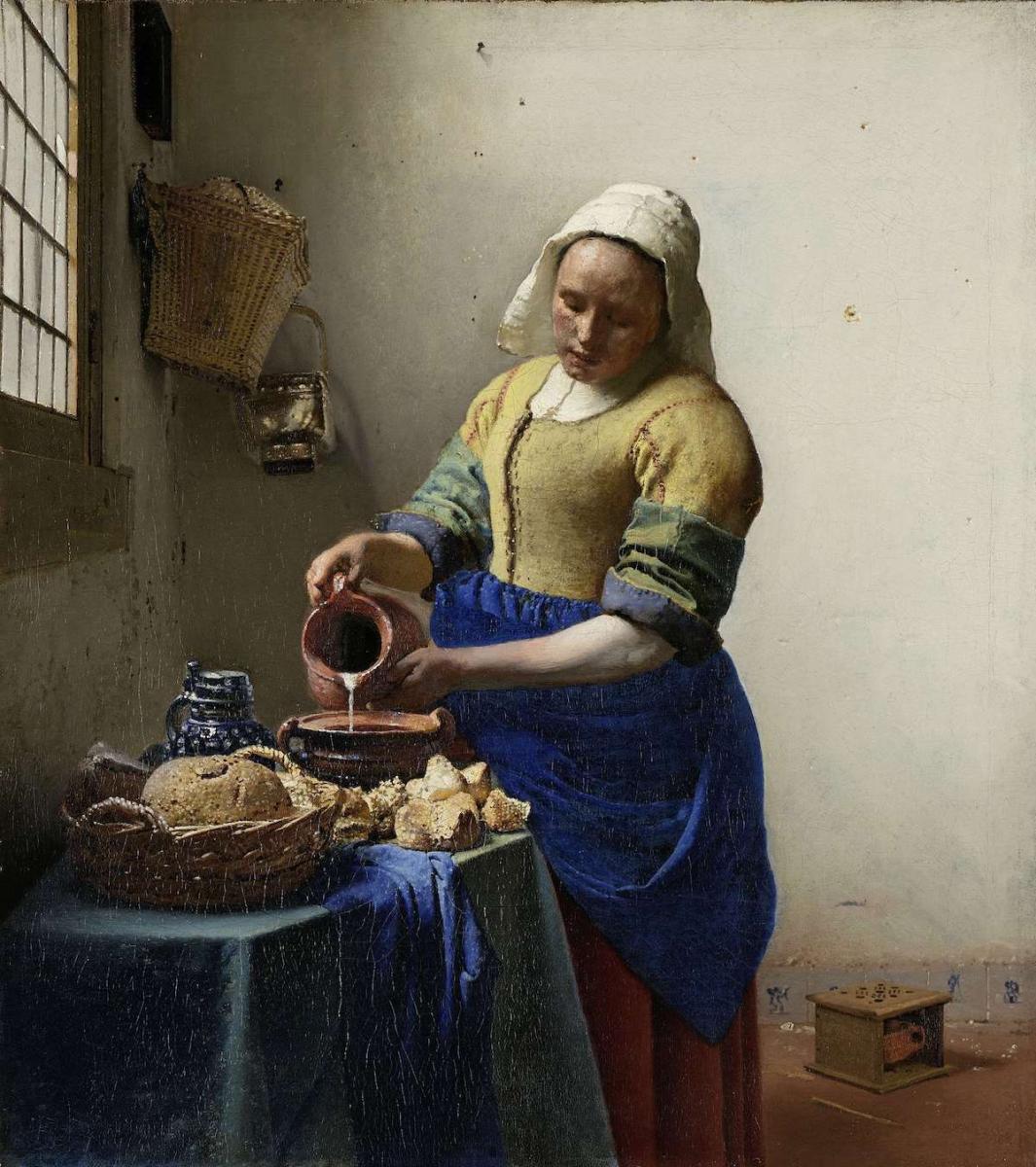 The Milkmaid, c.1658–59. Credit: Rijksmuseum, Amsterdam. Purchased with the support of the Vereniging Rembrandt
The Milkmaid, c.1658–59. Credit: Rijksmuseum, Amsterdam. Purchased with the support of the Vereniging Rembrandt
STILLNESS AND SIMPLICITY
We should come in quietly, so as not to disturb this sturdy Dutch kitchen maid from concentrating on her work. There is something timeless about this painting, as though the milk will never cease to flow.
Vermeer concentrated on the female universe, but such a focus on a maid is rare in Dutch art.
Known as The Milkmaid, Vermeer shows this as a quiet scene – yet look at the vibrancy of the colours red, yellow and blue, and the light coming through the window, illuminating the wall with its single nail.
As in View of Delft, Vermeer has used white dots to show the light reflections on the bread. Again, we wonder: was this inspired by using a camera obscura? This painting reveals his powerful skills of observation of optical effects; our eyes interpret the dots and patches on a shady surface as sunlight falling upon it.
Vermeer has also used traditional perspective constructions to create his sense of space by putting a pin in the vanishing point, which he carefully placed to emphasise the main compositional element. Strings attached to the pin would have guided him in constructing the orthogonal lines that would have defined the recession of floors, windows and walls. The use of this technique was confirmed when one of Vermeer’s works was found to have a pinhole in the vanishing point of the work.
Recent studies have revealed that Vermeer had originally painted a rack with hanging jugs on the wall and a basket behind the milkmaid. But he then painted them out, perhaps to make us concentrate solely on the maid and her pouring. With Vermeer, it certainly seems that less is more.
Let’s go upstairs. Vermeer is finding the definitive chord that will resonate through his career, concentrating on a refined, well-dressed woman absorbed in what she is doing.
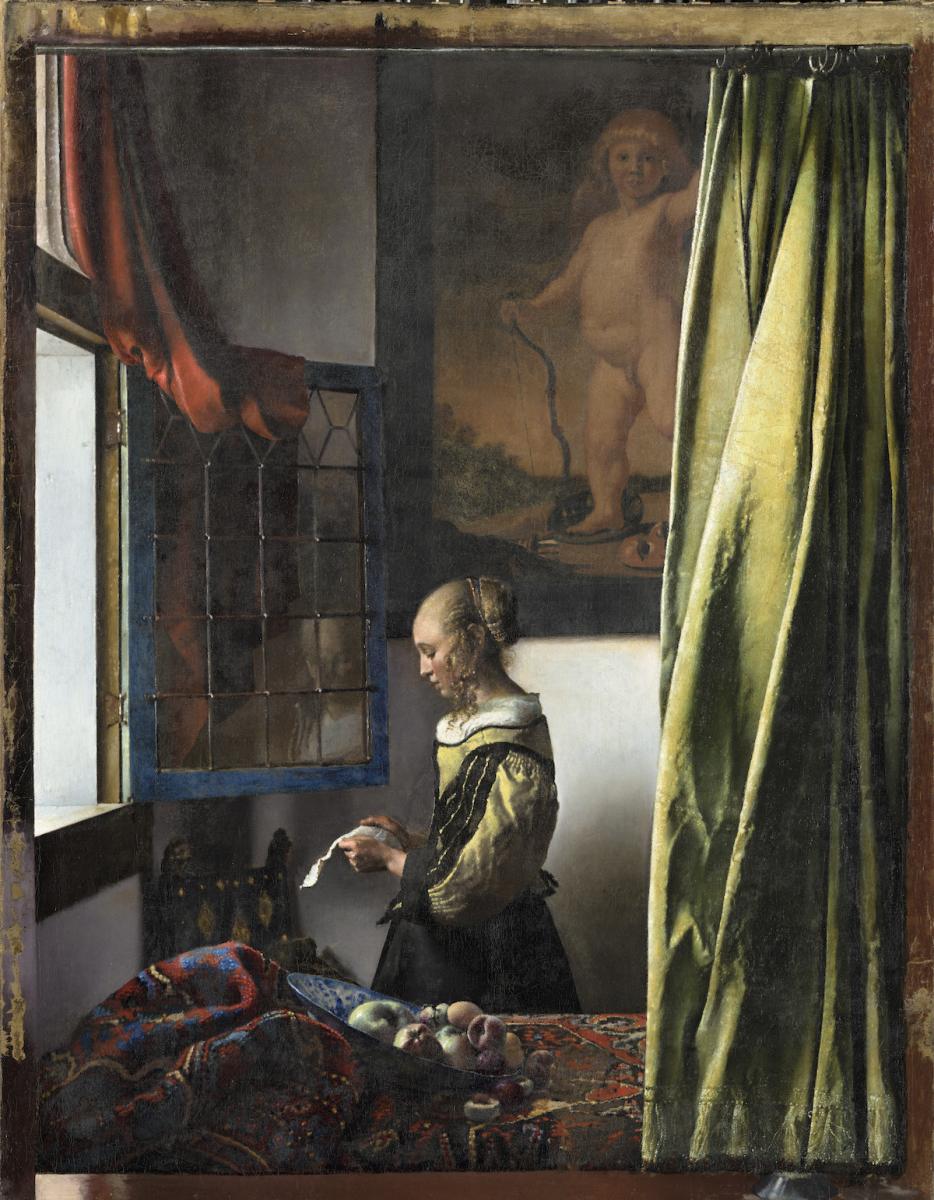 Girl Reading a Letter at an Open Window, 1657–58. Credit: Gemäldegalerie Alte Meister, Dresden
Girl Reading a Letter at an Open Window, 1657–58. Credit: Gemäldegalerie Alte Meister, Dresden
A MESSAGE FROM CUPID?
Again we see Vermeer’s masterly use of colour, light and harmony, creating a quiet, intimate scene of a woman in the corner of a room, absorbed in reading a letter. Her reflection is shown delicately in the glass of the window. The curtain is pulled back, providing a sense of privacy upon which we are almost intruding.
Vermeer has made this woman seem inaccessible; he has created a barrier by putting the table covered with a Persian carpet between us.
We wonder what is in the letter and who wrote it. There is little detail to help us find out more.
But there is more to this painting. Research reveals she is not alone. There is a painting within a painting here – a regained artwork, post-restoration, of Cupid on the wall. It had been painted over, so it was assumed Vermeer had done this as he had in The Milkmaid. Again less is more; he transcends the anecdotal and creates a mood.
But again, there is more to this artwork. Further study has shown there was a layer of pigment and dust between the overpainted layer and the symbol of love, which means it was covered over decades after Vermeer painted it. But by whom and why? The team at Gemäldegalerie Alte Meister, in Dresden, has removed the overpainting, restoring it according to Vermeer’s original intention. Perhaps Vermeer did give us a clue to the letter’s content. Is it a love letter?
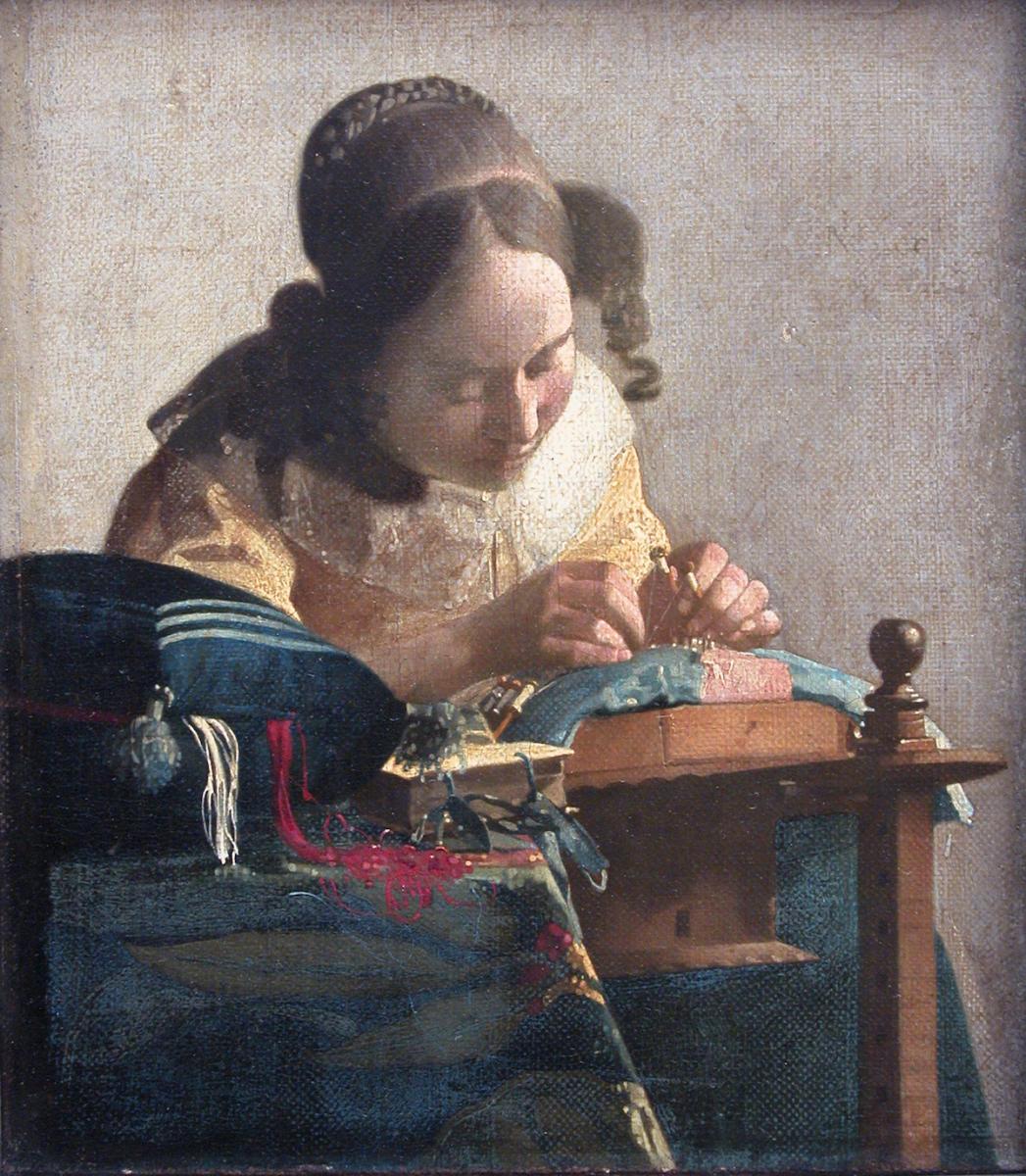
The Lacemaker, 1666–68. Credit: Musée du Louvre
THROUGH THE KEYHOLE
Despite or because of its diminutive size (it is the size of an A4 piece of paper), The Lacemaker commands our attention.
We see a quiet scene, which again is one we feel we are intruding upon: we’re almost looking through the keyhole at this young woman while she concentrates on her lacemaking.
We admire Vermeer’s rendering of colour and the sparkling highlights and delicate threads sliding through her fingers. But we also see blurred details: the threads in the foreground seem out of focus. Is this depth of field? Again, would Vermeer have seen this effect through a camera obscura?
We know that the wealthy art collector Pieter Teding van Berkhout visited Vermeer to view his work, resulting in one of only two written accounts to have survived by figures who actually met the artist. He said the most extraordinary aspect of Vermeer’s art lay in the perspective. Was he was referring to this painting?
He referred to Vermeer as très célèbre and as an excellent painter, which tells us Vermeer was clearly not ‘the Sphinx of Delft’ in his own lifetime.
He appears to have been well known, particularly by a circle of wealthy art connoisseurs. Berkhout was accompanied by Constantijn Huygens who, as secretary to the Prince of Orange, was at the centre of politics and art and the figure who ‘discovered' Rembrandt. He had seen a camera obscura in London and brought one back to the Netherlands and, in 1622, wrote: ‘It is impossible to express the beauty [of the camera obscura image] in words. The art of painting is dead, for this is life itself: or something higher, if we could find a word for it.’
So we know that camera obscuras were known and available in Vermeer’s time.
Recent research suggests that Vermeer might have come in contact with the camera obscura through the Jesuits who had a mission near his home. They thought a camera obscura could be used as a tool to see God’s divine light.
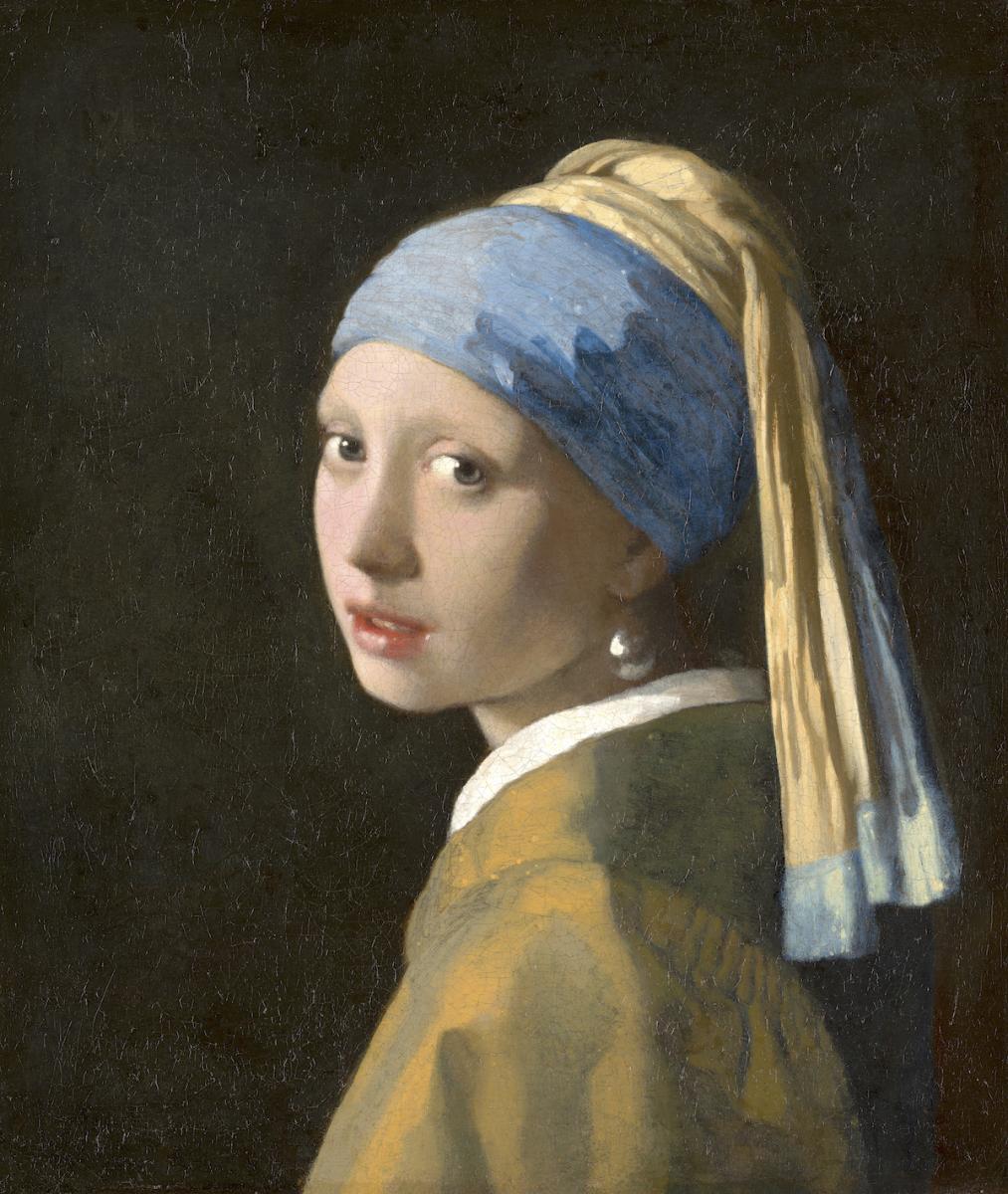 Girl with a Pearl Earring, 1664–67. Credit: Mauritshuis, The Hague
Girl with a Pearl Earring, 1664–67. Credit: Mauritshuis, The Hague
WHO IS SHE?
Turning quietly towards us, away from the dark background, into the light, her enigmatic gaze, parted lips and blend of charm and reserve have endowed Girl with a Pearl Earring with superstar status.
Notice the use of red, yellow and blue and the dots of light that create the glint in the girl’s eye, and the hint of moisture on the corner of her lip. And then our eye moves to the earring. Almost abstract, just two white dots of paint reflect the light: it's our eye that makes a pearl of it.
If we look at her face, there are no sharp lines, only soft contours. This way of painting has been compared to the sfumato technique, which Leonardo da Vinci used for the Mona Lisa. This is when the artist uses a fine shading to create a soft transition between colours and tones, creating a realistic appearance.
Girl with a Pearl Earring is not a portrait but a tronie, which is an old Dutch word meaning ‘face’.
It is not important who this girl is, although we wonder: who were his models? He was surrounded by women: his wife, daughters, mother, sister and mother-in-law. But we have no portraits of them, so we cannot say if they feature in his works. And as an aside, with all Vermeer’s children, the household must have been noisy, but we do not see any of that in his paintings.
The famous Dutch poet and statesman Jacob Cats wrote a poem about a young artist who says to his girlfriend: let me paint you, let me capture your youthful radiance so it will last forever through my art. Has Vermeer captured youthful radiance so we can admire her some 360 years later?
But paintings do age. ‘She’ was restored nearly 30 years ago. The yellow varnish and retouches were removed and a new varnish layer was put on to protect the original layer of paint. On top of this, retouches were added, as well as a final varnish layer, which had an ultraviolet inhibitor so it will not turn yellow.
Five years ago another piece of research was done, led by the Mauritshuis collaborating with an international team of scientists and art experts. Taken out of her frame and scanned 24/7 for two weeks, Girl with a Pearl Earringwas given a non-invasive body scan to unlock her secrets. With state-of-the-art equipment and technological advances since the last handling, it was possible to look below the surface, inside the layers of paint and within the crushed minerals of the pigments. This is probably the most researched ‘girl’ in the world, but still she keeps her mystery. We will almost certainly never know who she is and what she is about to say.
JANE’S TOP TIPS
Visit
Vermeer, the exhibition at the Rijksmuseum, Amsterdam, continues until 4 June 2023; rijksmuseum.nl
There are Vermeer paintings in The National Gallery, the Royal Collection and Kenwood House, London; The National Galleries of Scotland; National Gallery of Ireland; Louvre, Paris; Rijksmuseum, Amsterdam; Mauritshuis, The Hague; and in art museums in Berlin, Frankfurt, Dresden, Braunschweig, Vienna and Tokyo.
Nearly a third of Vermeer’s works are found on the east coast of the USA in The Frick Collection, The Met (The Metropolitan Museum of Art) and the National Gallery of Art, Washington. It is always hoped that the Vermeer stolen from the Isabella Stewart Gardner Museum will be recovered.
Good reads
Vermeer, editors Pieter Roelofs and Gregor JM Weber, Rijksmuseum, Thames & Hudson, 2023
Johannes Vermeer: Faith, Light and Reflection, by Gregor JM Weber, Rijksmuseum, 2023
Johannes Vermeer, National Gallery of Art, Washington, Royal Cabinet of Paintings Mauritshuis, The Hague, 1995
Vermeer and His Milieu: A Web of Social History, by John Michael Montias, 1989
A View of Delft: Vermeer Then and Now, by Anthony Bailey, 2002
Vermeer's Hat: The Seventeenth Century and the Dawn of the Global World, by Timothy Brook, 2009
Girl with a Pearl Earring, by Tracy Chevalier, 1999
If you enjoyed this Instant Expert why not forward this on to a friend who you think would enjoy it too?
Show me another Instant Expert story
About the Author
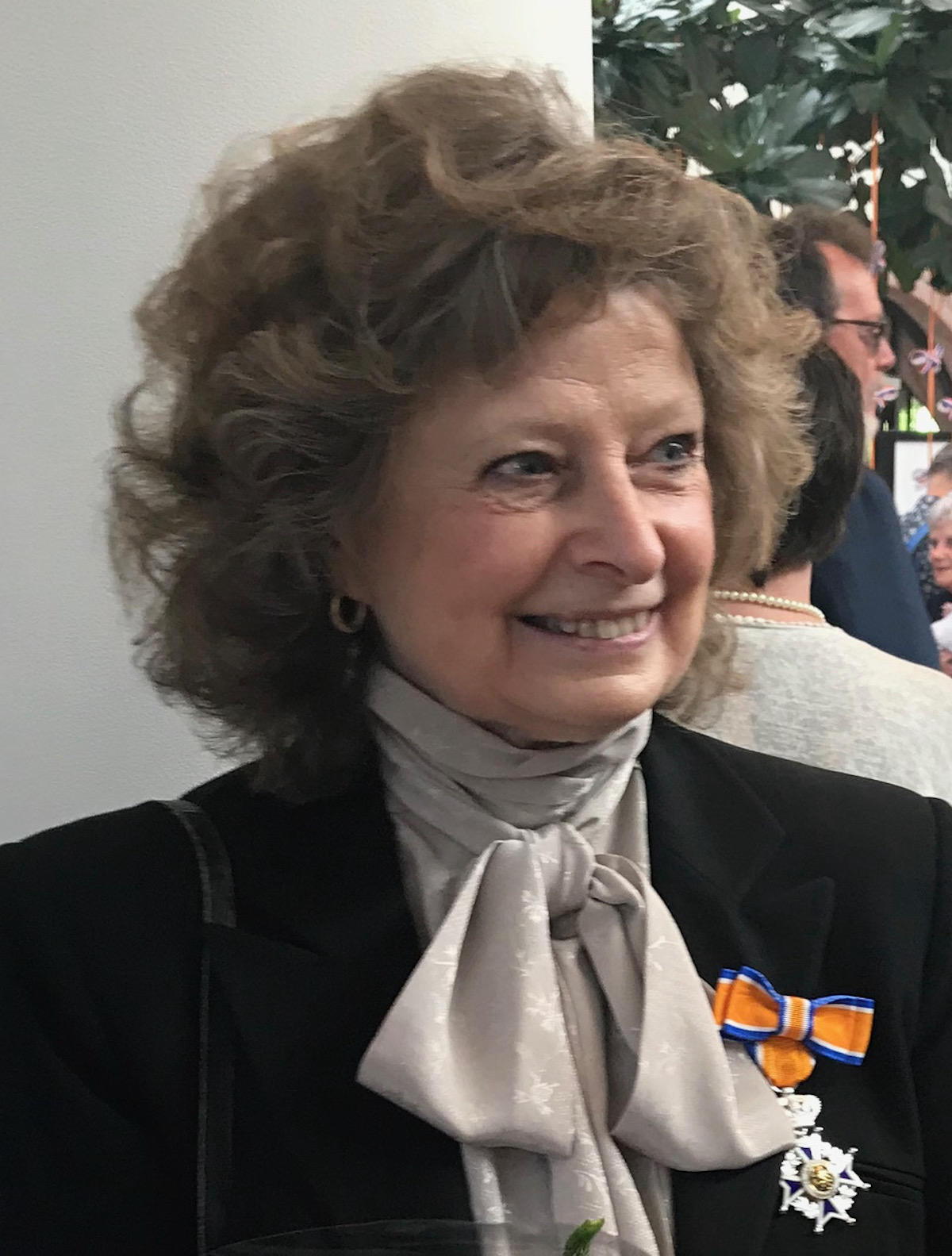
Jane E Choy-Thurlow
Is a docent and lectures and gives tours at the Mauritshuis, Prince William V Gallery and Huygens’ Hofwijck Museum in The Hague. Among the past exhibitions she has worked on are Vermeer (when at the Mauritshuis), Rembrandt by Himself, Rubens and Breughel: A Working Friendship and Hans Holbein The Younger. Jane is a founding member of The Arts Society The Hague and has fulfilled many key committee positions. Born in the United States, she received her BSc from Salem State University, USA and her MEd from Trinity College Dublin, and pursued art history studies at Leiden University. In 2018 she was made a Knight in the Order of Oranje Nassau by King Willem-Alexander of Orange for her knowledge and work in the field of the arts, particularly 15th- to 17th-century Dutch and Flemish art. Her lectures include The Mystery of Johannes Vermeer,Master of Light, Colour and Harmony, Rembrandt: Bohemian or Businessman, Romantic or Rebel?, Rubens & Brueghel: A Working Friendship, Snow and Ice, Holland Frozen in Time, Prized Possessions and Dutch 17th-century art in National Trust Houses.
Article Tags
JOIN OUR MAILING LIST
Become an instant expert!
Find out more about the arts by becoming a Supporter of The Arts Society.
For just £20 a year you will receive invitations to exclusive member events and courses, special offers and concessions, our regular newsletter and our beautiful arts magazine, full of news, views, events and artist profiles.
FIND YOUR NEAREST SOCIETY
MORE FEATURES
Ever wanted to write a crime novel? As Britain’s annual crime writing festival opens, we uncover some top leads
It’s just 10 days until the Summer Olympic Games open in Paris. To mark the moment, Simon Inglis reveals how art and design play a key part in this, the world’s most spectacular multi-sport competition



